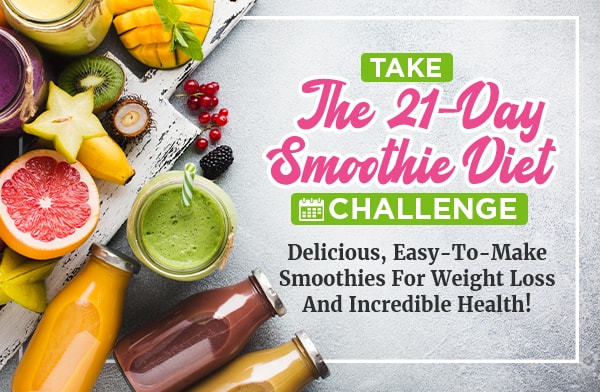5 Ingredients to Add to Smoothies to Your Boost Metabolism

Do you ever wonder why your friend doesn’t gain an ounce after gobbling down an entire cheesecake while you eat just one small slice, and the scale jumps the next time you stand on it?
It’s all about your metabolism. Metabolism is the rate at which your body burns calories, and a lot of it can depend on factors outside of your control. Things like gender, age, and the ratio of body muscle to fat play a part in how fast your body will burn the calories you consume.
It’s common knowledge that muscle burns more calories than fat. This is true even when you’re resting, so building muscle can be a helpful tactic to get rid of stubborn belly fat.
Along with cutting calories and working out, consuming metabolism-boosting ingredients is another powerful way to get your metabolism to work for, not against, you.
Five ingredients you can add to your smoothies that will boost your metabolism fall into these categories:
- Protein
- Veggies and fruits
- Nuts and seeds
- Spices
- Coffee, tea, and cacao
Protein
The current USDA Dietary Guidelines recommend protein make up somewhere between 10 and 35 percent of your daily calories, with some nutrition experts thinking 35 sounds high.
You can also use the calculation from the Institute of Medicine, which says the Recommended Daily Allowance (RDA) of protein for adults should be 0.8 g/kg body weight. To calculate it, divide your weight in pounds by 2.2, then multiply by 0.8.
For a more personalized look at your protein needs, use this USDA nutrient calculator, which also considers your height and activity level.
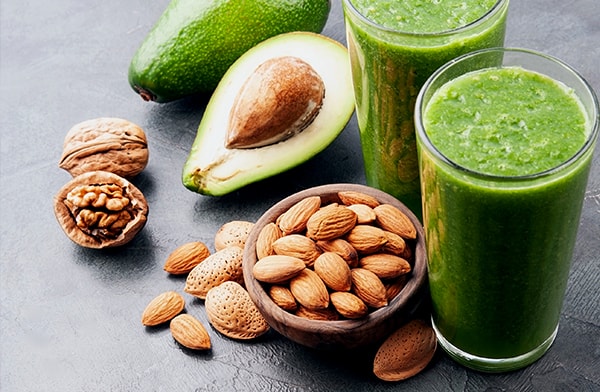
One factor contributing to a person’s metabolic rate is the amount of lean muscle they have. That’s largely dependent on how much protein they consume (along with incorporating some weight-bearing exercises into their schedule). Protein also takes longer to digest than carbs, keeping your body working and metabolizing.
While I’m not suggesting you add meat to your morning smoothie, I do suggest both protein powders plus legumes and beans.
Protein powders
Not all protein powders are created equal. Some of these metabolism-boosting powders taste awful, and others are packed with sugar and synthetic ingredients.
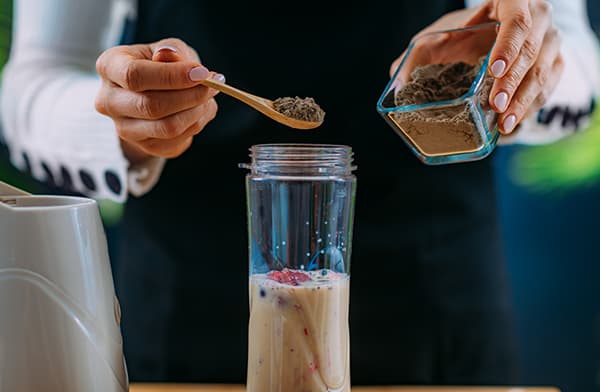
Over at Eat This, Not That! their editors found the best and healthiest protein powders to add to your smoothies. Their list is so good that I’m going to include it right here:
- Garden of Life Vegan Protein Powder
- Vega One All-in-One Protein Powder
- Nutiva Organic Cold-Pressed Raw Hemp Seed Protein Powder
- Jarrow Formulas Brown Rice Protein Concentrate
- NorCal Organic Classic Whey Protein Powder
- Naked Whey Protein Powder
- BulkSupplements.com Egg White Protein Powder
- SunWarrior Warrior Blend Plant-Based Powder
Legumes and beans
Legumes and beans — such as lentils, peas, chickpeas, black beans, and peanuts — are particularly high in protein compared to other plant foods. Studies suggest that their high protein content requires your body to burn more calories to digest them than lower-protein foods.
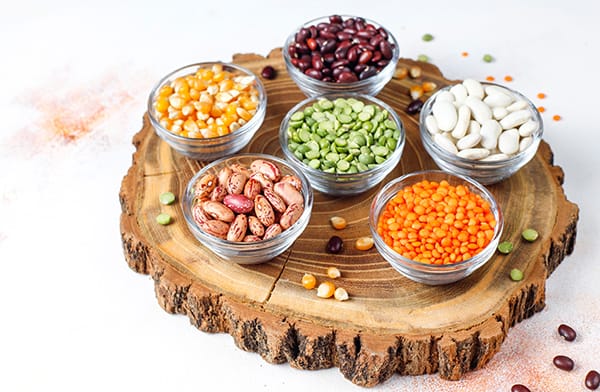
If you’re looking for a way to add these protein-packed pellets to your diet, here are 21 Delicious Bean Smoothie recipes.
Veggies and Fruits
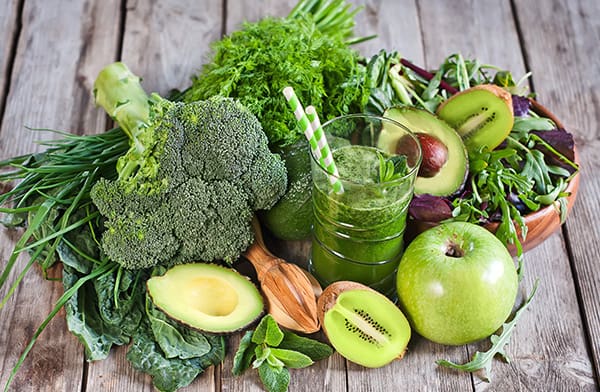
When it comes to boosting our metabolism, our bodies require fiber, healthy fats, whole-food carbs, and the right balance of vitamins, minerals, and nutrients. Some of the best of the bunch:
Broccoli
Broccoli is one cruciferous vegetable that does the heavy lifting when giving yourself a metabolism boost. Cruciferous vegetables are the ones that belong to the cabbage family, and broccoli is one of its heroes.
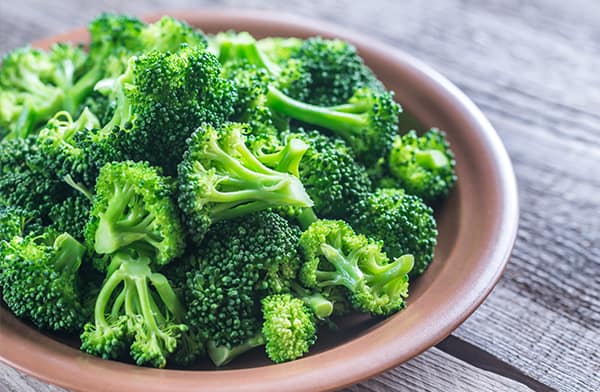
Containing glucoraphanin, a powerful and long-lasting antioxidant, broccoli has more than its fair share. Also described as a phytonutrient, broccoli can give your metabolism a tune-up, among all the other well-known health benefits it does for us. Both broccoli sprouts and Brussels sprouts can have a higher level of glucoraphanin, but their taste may be too much to handle in a smoothie.
Leafy Greens
Dark, leafy greens are packed with essential nutrients, like iron and magnesium. Both of these are integral for efficient metabolism. For example, spinach, kale, Swiss chard, and collard greens are all high in iron which helps to boost metabolism.
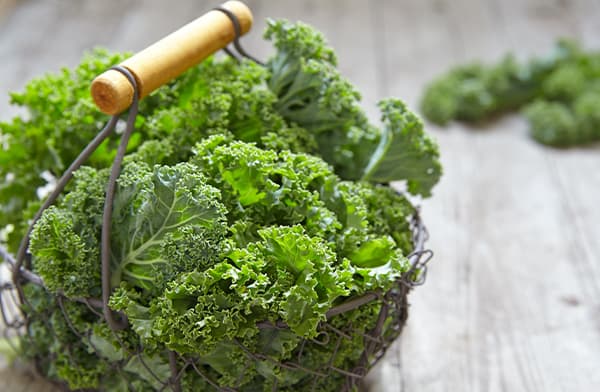
An iron deficiency or anemia can make you sluggish and slow your metabolism by suppressing oxygen flow to your muscles and tissues. So if you can’t stomach the taste of some of these darker greens, make sure your iron levels are where they need to be by taking an iron supplement.
Grapefruit
Grapefruits contain the antioxidant naringenin, which has been found to help your body use insulin more effectively. It helps keep your blood sugar in check and boosts calorie burn.
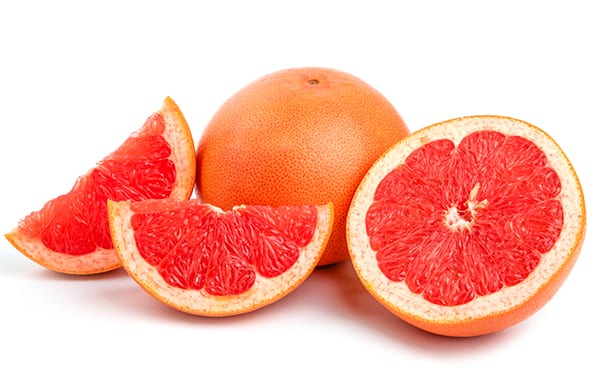
Over at Eating Bird Food, Brittany recommends segmenting the grapefruit to remove its bitter pith without any harsh aftertaste. She segments her grapefruits over a bowl to catch all the fresh juice and include it in her smoothie. She even squeezes all the rind pieces over the bowl to get every last drop of juice.
Check out her Grapefruit Smoothie recipe for a detox smoothie that promises to boost your metabolism.
Pineapple
Pineapples are infused with various nutrients, but it’s the bromelain enzyme that helps explicitly improve your metabolism, which burns fat. It specifically targets belly fat; bless it.
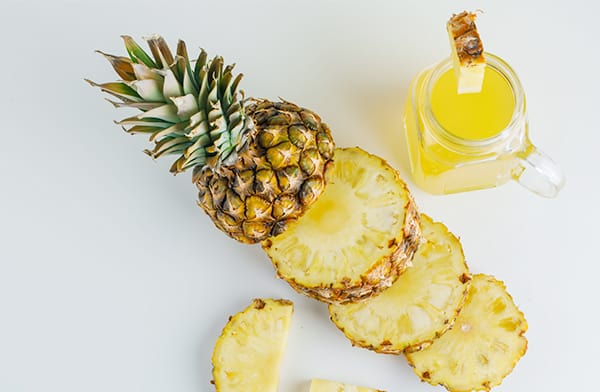
While pineapples aren’t a common allergen, eating more than a few servings a day may have unintended side effects. People who take blood thinners should eat this fruit in modest amounts as the bromelain may affect blood clotting.
You may have a sensitivity to bromelain that triggers tongue burning or itching and even nausea or diarrhea. Make sure your pineapple is a light to medium yellow before eating.
Lemons
Lemons help increase your metabolic rate, which lets you burn more calories and store less fat. They work to slow down the rate of starch digestion, helping to keep blood sugar balanced. Adding lemon water to your smoothies is an extremely simple and effective way to boost metabolism.
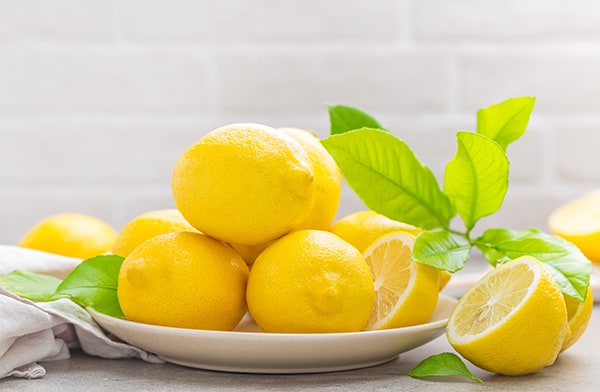
I found a lemon smoothie recipe described as “sunshine in a bottle.” Lori is clearly obsessed with lemons and calls her blog “foxes love lemons.” I like that she offers ways to make substitutes in the recipe for different dietary needs.
Apple Cider Vinegar
Apple cider vinegar is often claimed to boost metabolism in humans, but few studies have investigated this directly. But hear me out. Research shows that this fermented form of apple juice can help stabilize blood sugar levels, thereby helping prevent cravings (and subsequent overeating) caused by blood sugar dips.
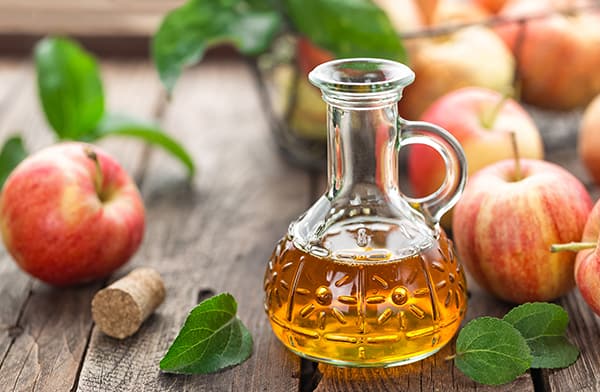
The theory is that acetic acid, the main component in vinegar, may interfere with your body’s ability to digest starch and curb starch’s effect on blood sugar. In smoothies, apple cider vinegar pairs well with cinnamon, improving insulin sensitivity. Try the two together in this Apple Spice Smoothie.
Nuts and Seeds
Flax, chia, and sunflower seeds are more than just seeds — they are full of nutritional benefits, including boosting your metabolism. They all contain micronutrients like folic acid and iron, are rich in Omega-3 fatty acids and antioxidants, and are a great source of dietary fiber.
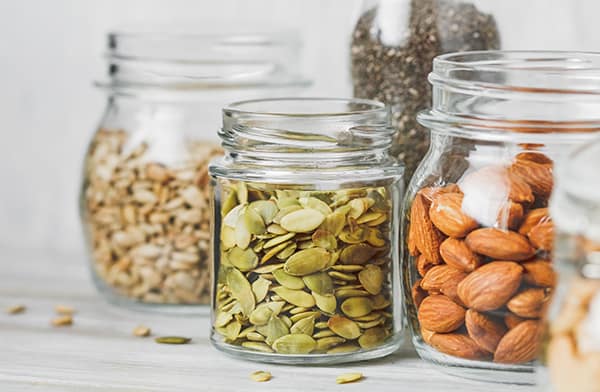
Other nuts rich in fiber, protein, healthy fats, vitamins, and minerals are walnuts, pistachios, brazil nuts, and cashews. The secret to eating them in a way that helps you lose weight and burn belly fat is to control the portion size. Just a few nuts are all it takes to get the benefits of these metabolism-boosting nuggets.
Almonds
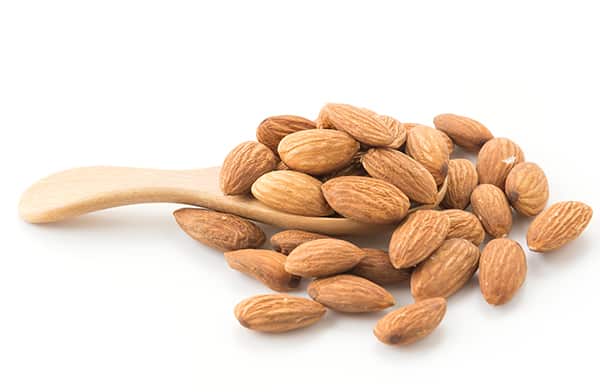
Almonds are known as one of nature’s superfoods. They contain essential fatty acids, which can help speed up your body’s metabolism for a few hours. They’re also a good source of amino acids that help burn fat and boost your metabolism. Adding almonds to your morning smoothie has been associated with greater weight loss and higher fat metabolism. Check out this nutritious smoothie recipe that combines almond butter and cherries: Almond Cherry Smoothie.
Flaxseeds
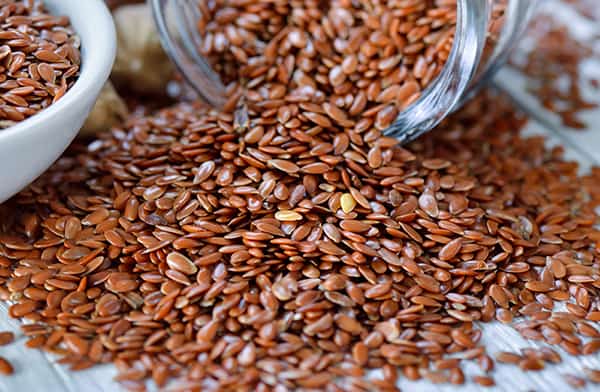
Flaxseeds are tiny, brown or golden-colored seeds, also known as linseed. The presence of plant-based lignans, omega-3 fatty acids, oils, and fiber in flaxseed help improve the digestion of your body by preventing constipation. Include this shiny nutty seed in your diet by grinding it to a powder and adding it to your smoothies.
Chia Seeds
Chia seeds are poppy-like seeds that form a gel-like texture, making them a favorite and healthy seed. Despite their tiny size, chia seeds are one of the most nutritious foods on the planet. They’re loaded with fiber, protein, omega-3 fatty acids, and micronutrients.
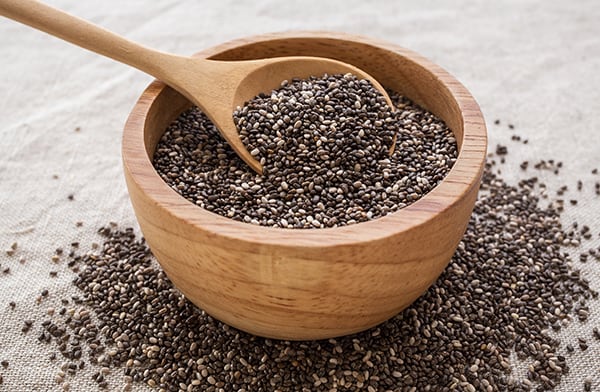
In addition to thickening your smoothie and making it way more satisfying, chia seeds are a great source of alpha-linolenic acid (ALA), a plant-based omega-3 fatty acid. What’s cool about omega-3s is that they stimulate the satiety hormone leptin, which signals your body to burn these fats instead of storing them as fat. Try them out in this Blueberry-Cashew Bliss smoothie.
Sunflower Seeds
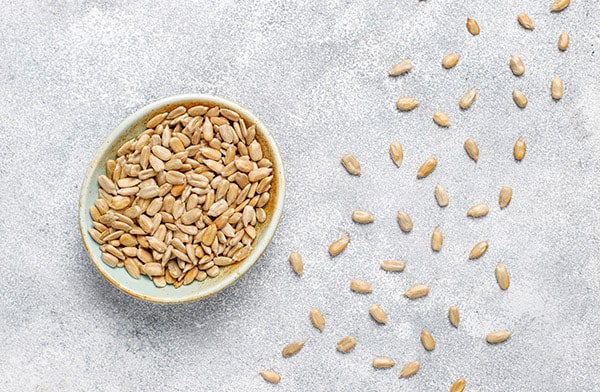
Sunflower seeds are a cheaper wonder seed option. They contain a good amount of protein, monounsaturated fats, and vitamin E and also help boost metabolism. Grind the seeds before adding them to your favorite smoothie recipe.
Spices
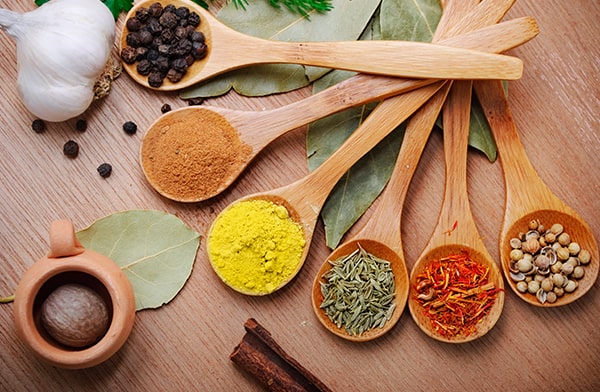
Even spices can help to boost your metabolism and help your body burn more fat. The thermogenic effect they provide increases your metabolism, and some of them also help reduce hunger.
Ginger
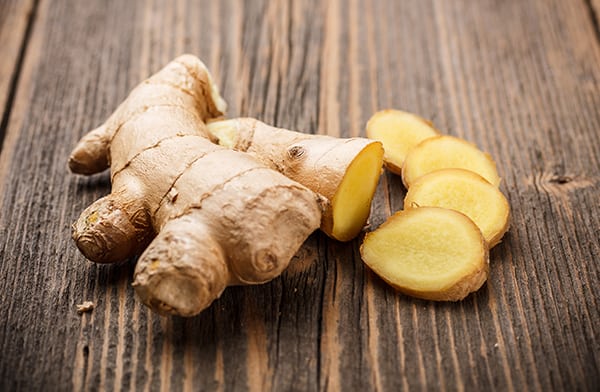
Ginger is thought to have particularly beneficial metabolism-boosting properties, promotes digestion, and increases your metabolism. Research shows that just two grams of ginger may help you burn up to 43 calories. For example, the lemon smoothie recipe I linked to in the Veggies and Fruits section above calls for a 1 ½ tsp of ginger. That’s four times more than the two grams the research calculated.
Cinnamon
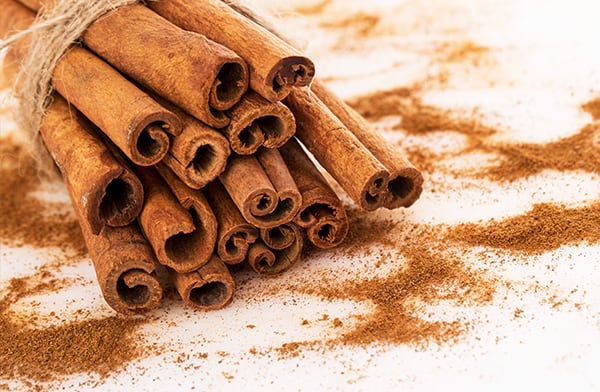
Cinnamon is the second most popular spice in the United States, after black pepper, and tastes better in smoothies! Cinnamon can improve metabolism since your body uses more energy to process the spice than it does for other foods. It also targets the fat deposited in the abdominal area, improves digestion, and helps regulate blood sugar levels.
Turmeric
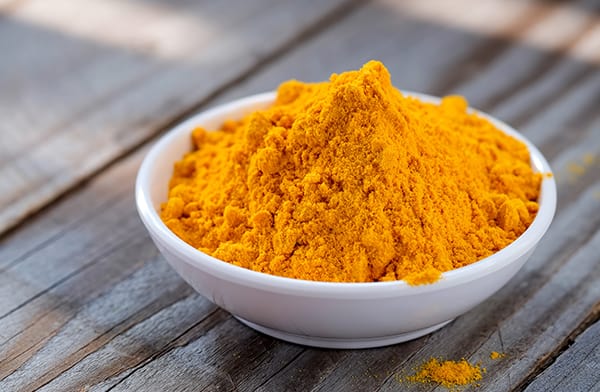
Turmeric has been around for centuries and, along with the power to boost metabolism, it contains curcumin, which is high in antioxidants and fights against inflammation. There’s also a potential that turmeric can prevent dementia and cognitive decline. Here’s a recipe for a Pineapple Tumeric Smoothie that includes pineapple and ginger for a trifecta of metabolism-boosting power.
Cayenne Pepper
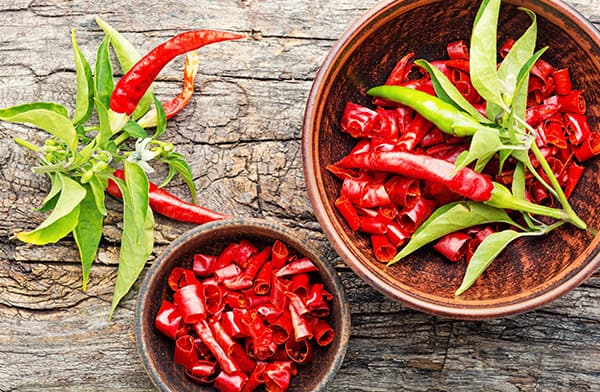
Cayenne pepper has an active ingredient called capsaicin, which can boost your metabolism. In addition, the heat raises your body temperature, increasing metabolism by 15% to 20%. Try this Sweet ‘n’ Spicy Tropical Smoothie featuring pineapple, avocado, and ginger.
Coffee, Tea, and Cocoa

For those of you who can’t start your day without a cup of coffee or tea, research suggests they both can help boost your metabolism, giving you all the excuses you need to add them to a morning smoothie. And research is also on your side if you’re a chocolate lover!
Coffee
Coffee studies have noted that people who consume at least 270 mg of caffeine daily, or about three cups of coffee, burn up to an extra 100 calories per day. Furthermore, caffeine may help your body burn fat for energy, and it seems especially effective at boosting your workout performance.
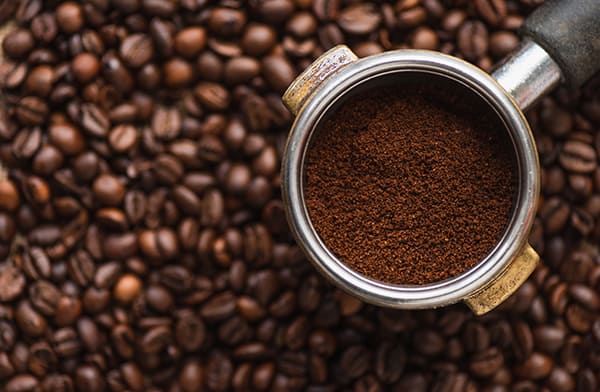
I don’t need any more justification to include this Coffee Lover’s Smoothie recipe that’s creamy and delicious, healthy, and packed with protein. Each serving provides 17 grams of protein and 96 grams of fiber and includes cauliflower, all-natural almond butter, protein powder, and cacao powder. Bring on the workout!
Tea
Tea contains health-boosting compounds called catechins that may work in tandem with caffeine to boost your metabolic rate. Oolong and matcha green tea increase fat oxidation and help you burn extra calories when part of an exercise plan. Green tea boosts your metabolism to the tune of about 4% for the day.

For smoothies, use matcha green tea — a powder made from whole, dried green tea leaves that are much easier to scoop and likely contain concentrated antioxidants. It has an earthy, bitter, and somewhat intense flavor, so stick to just one teaspoon per smoothie. Try it out in this Super Green Tea Smoothie.
Cocoa
Cocoa is a tasty treat that may also benefit your metabolism. One study suggests that cocoa may prevent the action of enzymes necessary to break down fat and carbs during digestion, which could prevent the body from absorbing them and the calories they provide. If you’d like to give a cocoa smoothie a try, opt for raw versions, commonly called cacao, in this Frozen Banana & Cacao Smoothie recipe. Processing reduces the amounts of beneficial compounds and adds extra sugar and calories.
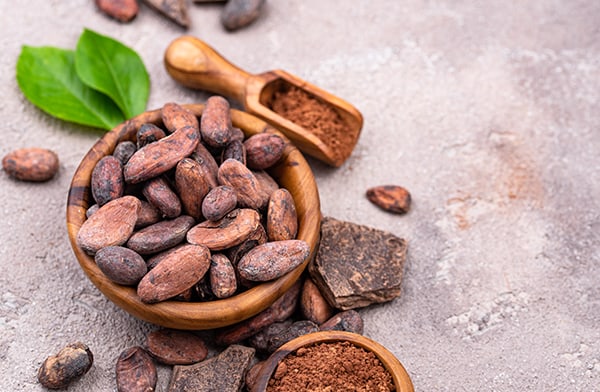
Did I miss anything? Leave me a comment below if you know another ingredient that can help boost metabolism and would work to add to smoothies.
Check out The Smoothie Diet for 21 days worth of two smoothies each day (along with one whole food meal and up to two snacks each day). I’ve done all the planning work, so you can just download and follow the simple plan.
Do you have any questions about the ingredients I listed, or how they can potentially improve both your metabolism and your health? Was there anything that I mentioned in today’s article that you would like a little more explanation on? If yes to either, please feel free to reach out and contact me at any time! I’d love to answer any of your questions, and assist you on your journey to newfound health.
